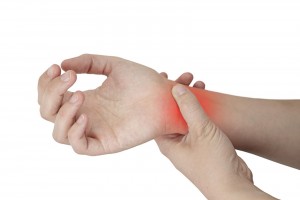Which Injury do you have – Traumatic or Cumulative?
 There are two types of injuries: acute/traumatic and chronic/cumulative. Acute injuries occur suddenly, such as a sprained ankle, pulled muscle, or broken bone. Chronic injuries relate to tissue damage that occurs over time as a result of repetitive strain, such as tennis elbow from playing tennis or shin splits from running.
There are two types of injuries: acute/traumatic and chronic/cumulative. Acute injuries occur suddenly, such as a sprained ankle, pulled muscle, or broken bone. Chronic injuries relate to tissue damage that occurs over time as a result of repetitive strain, such as tennis elbow from playing tennis or shin splits from running.
Symptoms of an acute injury:
- Sudden, severe pain
- Injured area is swelling and is tender to the touch
- Unable to bear weight on the affect area, or restriction on normal movement
- A bone is visibly out of place
Symptoms of a chronic injury:
- Pain during the activity or event
- A constant dull ache
- Swelling
Strategies to prevent injuries:
- Don’t twist your knees when you stretch
- When jumping, land with your knees slightly bent
- Do warmup exercises before your activity
- Always stretch before and after any activity and ensure all joints have full range of motion
- Do cool down exercises after your activity or workout
- Wear shoes that fit properly and are specific for your activity
- Use proper form to reduce your risk of “overuse” injuries
- Learn how to use your equipment correctly
- Wear protective gear, such as helmets, protective pads, etc.
- Don’t participate when you’re injured
- Watch for signs of fatigue or over training – know your body’s limitations
- Hire a professional and take a few lessons to ensure proper body alignment
- Improper technique can take a toll on your body
- Don’t take on too much physical activity too quickly
If you suffer an injury, use the RICE (Rest, Ice, Compression, Elevation) method of treatment as soon as possible to help relieve pain, swelling and promote healing.
- Rest. Rest and protect the injured or sore area.
- Ice. Cold will reduce pain and swelling. Apply an ice or cold pack right away to prevent or minimize swelling. Apply the ice or cold pack for 10 to 20 minutes, 3 or more times a day. After 48 to 72 hours, if swelling is gone, apply heat to the area that hurts.
- Compression. Compression, or wrapping the injured area with an elastic bandage will help decrease swelling. Make sure that the bandage is not too tight.
- Elevation. Elevate the injured area on pillows while applying ice and anytime you are sitting or lying down. Try to keep the area at or above the level of your heart to help minimize swelling.
If your symptoms increase or last more than a few days, contact your health care practitioner.

